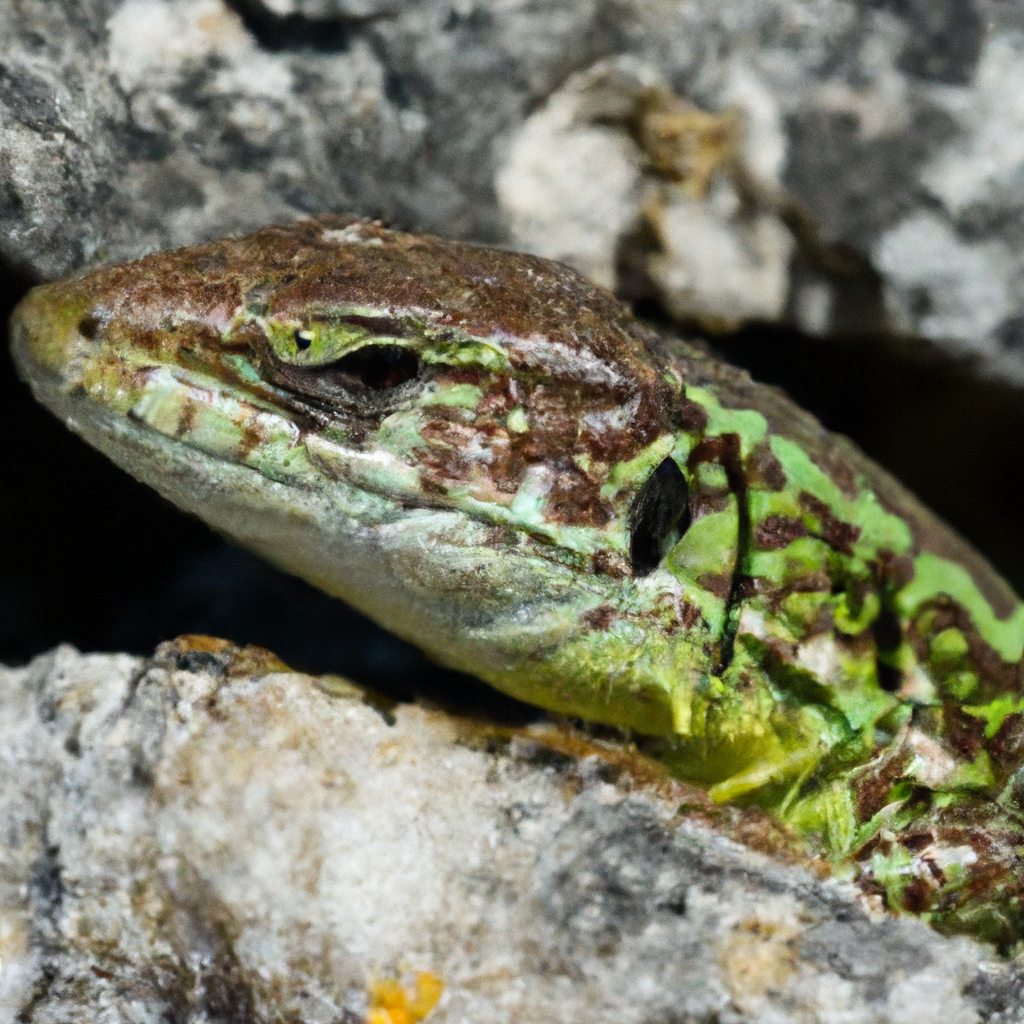Introduction to Lizard Community Ecology in Europe
Lizard Community Ecology in Europe is such a fascinating topic! Did you know that Europe is home to a diverse array of lizard species, each playing a unique role in their ecosystem? From the vibrant colors of the Italian Wall Lizard to the elusive Sand Lizard of the UK, these reptiles are captivating creatures worth exploring.
When diving into the world of Lizard Community Ecology in Europe, it’s like embarking on a thrilling adventure through the continent’s varied landscapes. Picture yourself trekking through the Mediterranean scrublands, where you might encounter agile Common Wall Lizards basking in the sun. Or perhaps you find yourself wandering through the temperate forests of Northern Europe, where the Common Lizard quietly navigates the undergrowth.
Understanding the dynamics of lizard communities in Europe opens up a whole new perspective on the intricate web of life that exists in these regions. These reptiles aren’t just passive inhabitants of their environments; they actively shape and respond to the ecological interactions around them. It’s like observing a living puzzle where each piece, no matter how small, contributes to the bigger picture.
Exploring the biodiversity of European lizards can lead to surprising discoveries. Did you know that some species exhibit unique behaviors, such as tail autotomy, where they can detach their tails to escape predators? Imagine witnessing this remarkable defense mechanism in action—it’s both awe-inspiring and a testament to the adaptability of these creatures.
As we delve deeper into the realm of Lizard Community Ecology in Europe, we’ll unravel the interconnectedness of species, the impact of environmental changes, and the conservation efforts aimed at preserving these delicate ecosystems. So, grab your metaphorical backpack and join me on this journey to uncover the hidden world of lizards in Europe—it’s a wild ride you won’t want to miss!
Importance of Studying Lizard Communities
Lizard communities may not be the first thing that comes to mind when you think about ecology, but let me tell you, they are absolutely fascinating! Imagine a diverse group of lizards coexisting in the European habitats, each playing a unique role in the ecosystem. It’s like a mini Jurassic Park right in our backyard!
Now, let me share an interesting fact with you about the importance of studying lizard communities in Europe. Did you know that lizards are considered indicator species? That means changes in their populations can signal broader changes in the environment. By studying these little reptiles, scientists can gain valuable insights into the health of ecosystems and the impact of human activities.
I remember the first time I witnessed a lizard basking in the sun on a rock while hiking in Europe. It made me realize how intricately connected these creatures are to their surroundings. Understanding the dynamics of lizard communities can provide us with a window into the intricate web of life that sustains our planet.
So, why should we care about studying lizard communities in Europe? Well, aside from the sheer wonder of nature’s complexity, these studies can help us better conserve biodiversity, protect fragile habitats, and even predict the effects of climate change on wildlife. It’s like peering into a crystal ball to glimpse the future of our environment.
Have you ever wondered how lizards communicate with each other or how they compete for resources in their habitats? These are just some of the questions that researchers delve into when studying lizard communities. By uncovering these mysteries, we gain a deeper appreciation for the beauty and resilience of the natural world.
In conclusion, exploring the intricacies of lizard community ecology in Europe opens up a world of discovery and insight into the delicate balance of nature. So next time you spot a lizard darting across your path, take a moment to appreciate the hidden world of biodiversity that surrounds us.
Biodiversity of Lizards in European Habitats
When it comes to the biodiversity of lizards in European habitats, it’s truly fascinating to see the wide variety of species that call this region home. Did you know that Europe is home to over 100 different species of lizards, each with its own unique features and characteristics? From the vibrant colors of the Spanish Ibiza wall lizard to the elusive sand lizard found along coastal dunes, European habitats offer a rich tapestry of lizard diversity.
One interesting fact about the biodiversity of European lizards is that they have adapted to thrive in diverse environments, ranging from rocky cliffs to lush forests and even urban areas. This adaptability is a testament to the resilience of these fascinating creatures and their ability to coexist with human activity.
Exploring the different habitats where European lizards reside can provide valuable insights into their ecological roles and interactions within the ecosystem. Observing how lizards interact with their surroundings, hunt for prey, and communicate with each other offers a glimpse into the intricate web of life in these habitats.
Next time you’re out exploring nature in Europe, keep an eye out for these remarkable reptiles. Whether you spot a common wall lizard basking in the sun or a quick-footed sand lizard darting across the sand, take a moment to appreciate the beauty and diversity of lizards in European habitats. Their presence adds an extra layer of richness to the natural world around us.
Ecological Interactions Among European Lizards
When it comes to understanding the ecological interactions among European lizards, it’s like peeling back the layers of a complex and fascinating puzzle. European lizard communities are not just a random assortment of reptiles; they are intricately connected through a web of ecological relationships that shape their behaviors, habitats, and survival strategies.
Imagine walking through a lush European forest and stumbling upon a scene where lizards of different species are coexisting harmoniously. This interaction between species is not just a coincidence; it reflects the intricate balance of predator-prey relationships, competition for resources, and mutualistic interactions that shape lizard communities in Europe.
Each species of European lizard plays a unique role in the ecosystem. Some species act as predators, keeping insect populations in check, while others serve as prey for larger predators. The competition for food, shelter, and breeding sites among different lizard species drives the dynamics of these communities.
One interesting fact about the ecological interactions among European lizards is that some species exhibit territorial behaviors to defend their resources. By establishing territories, lizards reduce competition and ensure access to essential resources like food and mates. These territorial behaviors play a crucial role in shaping the structure of lizard communities in Europe.
As we delve deeper into the world of European lizard communities, we begin to unravel the intricate connections that underlie their existence. Understanding these ecological interactions is not only fascinating from a scientific perspective but also essential for conservation efforts aimed at preserving the diversity and health of lizard populations in Europe.
So, the next time you spot a European lizard basking in the sun or darting across the forest floor, remember that it is part of a larger ecological tapestry where every species plays a vital role. By appreciating the complexity of these interactions, we can gain a deeper insight into the rich biodiversity of European lizard communities and the importance of conserving their habitats for future generations to enjoy.
Factors Influencing Lizard Communities in Europe
Have you ever considered the factors that influence lizard communities in Europe? It’s quite fascinating to delve into the various elements that shape the dynamics of these reptilian populations. From environmental conditions to predator-prey relationships, there’s a lot at play in the intricate web of ecological interactions.
One interesting aspect to explore is how climate change is impacting lizard communities in Europe. With rising temperatures and shifting weather patterns, these cold-blooded creatures are facing new challenges. Some species may struggle to adapt to rapidly changing environments, leading to shifts in their distribution and abundance. It’s a stark reminder of the delicate balance that exists in nature and the ripple effects of global climate phenomena.
On a more positive note, conservation efforts are underway to protect European lizard species facing threats such as habitat loss and fragmentation. By understanding the factors influencing lizard communities, conservationists can implement targeted strategies to safeguard these unique creatures for future generations to enjoy.
When you think about the factors influencing lizard communities in Europe, it’s like peeling back the layers of a complex puzzle. Each piece contributes to the overall picture of biodiversity and ecological resilience in the region. By appreciating the interconnectedness of various factors, we gain a deeper understanding of the importance of preserving these ecosystems for the benefit of both lizards and other wildlife.
So, next time you spot a lizard basking in the European sun, take a moment to consider the intricate web of factors that shape its existence. From habitat availability to food resources, every element plays a role in maintaining the delicate balance of nature. By appreciating the complexity of lizard communities in Europe, we can better advocate for their protection and conservation.
Conservation Efforts for European Lizard Species
Conservation efforts for European lizard species are crucial to maintaining the balance of our ecosystems. As I was hiking through a beautiful European forest last summer, I came across a vibrant green lizard sunbathing on a rock. It was a mesmerizing sight, and it made me realize how important it is to protect these fascinating creatures.
Did you know that European lizards play a vital role in controlling insect populations and maintaining the health of their habitats? It’s incredible how such small creatures have such a significant impact on the ecosystem. With their diverse colors and unique behaviors, European lizards are not just aesthetically pleasing but also essential for the environment.
However, despite their importance, many European lizard species are facing threats due to habitat loss, climate change, and human activities. This presents a challenge for conservationists and researchers working to protect these species and their habitats. By raising awareness about the conservation needs of European lizards, we can contribute to their survival and the overall health of our ecosystems.
One practical tip for supporting European lizard conservation is to be mindful of our actions when exploring their habitats. Avoid disturbing their natural environment, refrain from capturing them as pets, and support local conservation initiatives dedicated to protecting these species. Every small effort can make a big difference in preserving the biodiversity of European lizard communities.
Considering the broader implications, the decline of European lizard populations could have cascading effects on other species and ecosystem functions. By focusing on conserving these charismatic reptiles, we are not only safeguarding their future but also promoting the resilience of entire ecosystems.
So, next time you encounter a European lizard in the wild, take a moment to appreciate its beauty and significance in our natural world. Together, we can work towards ensuring a sustainable future for these remarkable creatures and the ecosystems they call home.
Field Guide: Identifying Common European Lizards
When it comes to identifying common European lizards, having a reliable field guide can be incredibly helpful. Picture this: you’re out exploring the beautiful landscapes of Europe, and suddenly, you spot a lizard darting across your path. Now, wouldn’t it be exciting to be able to identify that lizard on the spot?
A handy field guide dedicated to European lizard species can make your wildlife encounters even more thrilling. It provides detailed descriptions, images, and information about the characteristics and habitats of various lizard species found in Europe. With this guide in hand, you can delve into the world of reptiles and gain a deeper understanding of the diverse lizard communities that inhabit the continent.
Imagine flipping through the pages of the field guide and stumbling upon fascinating facts about the vibrant colors of the European Green Lizard or the elusive nature of the Sand Lizard. Each turn of the page offers a new discovery, allowing you to appreciate the unique features and behaviors of these captivating creatures.
The convenience of a field guide doesn’t just end at identification. It can also enhance your overall nature-watching experience by helping you learn about the ecological roles of different lizard species, their preferred habitats, and the best times to spot them in the wild. Whether you’re a seasoned herpetologist or a nature enthusiast, a reliable field guide can be your companion in unraveling the mysteries of European lizard communities.
So, the next time you embark on a nature walk or a wildlife expedition in Europe, don’t forget to pack your trusty field guide. Who knows, you might just encounter a rare species or witness a fascinating lizard interaction that leaves you in awe of the intricate ecosystems that surround us. Happy lizard spotting!
Appreciating the Diversity of Lizard Communities in Europe
Have you ever tried to identify European lizards and found yourself confused by their similarities? Well, let me tell you, creating a field guide to distinguish these little reptiles can be quite an adventure! I remember when I first delved into the world of European lizard identification – it was like navigating a colorful puzzle.
Imagine walking through a lush European forest, armed with a field guide, trying to spot and identify different lizard species. Each one seems to blend into its surroundings, making it a challenge to pinpoint the exact species. But here’s where the fun begins – observing their unique characteristics, from the patterns on their scales to their distinctive behaviors.
One interesting fact about creating a field guide for European lizards is that these creatures exhibit incredible diversity in coloration, size, and habitat preferences. From the vibrant green hues of the emerald lizard to the sleek patterns of the sand lizard, each species offers a glimpse into the rich tapestry of European biodiversity.
As you flip through the pages of the field guide, you’ll uncover tips and tricks for distinguishing common European lizards. Pay attention to details like the shape of their heads, the patterns on their bodies, and even their preferred basking spots. Armed with this knowledge, you’ll soon become a seasoned lizard enthusiast, ready to identify these fascinating creatures with ease.
So, the next time you venture into the European wilderness, take along your trusty field guide and embark on a lizard-spotting expedition. Who knows, you might just stumble upon a rare species or witness an intriguing lizard interaction that adds to your growing appreciation of these remarkable reptiles. Happy lizard hunting!




